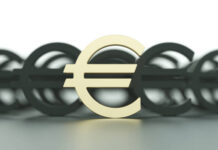Market movers today
In the euro area the market highlight today will be the HICP figures for June. Due to Germany’s energy relief measures, core inflation might hold steady at 3.8%, but we doubt that we have seen the inflation peak yet. Higher food and energy prices should continue to pull headline inflation up to 8.5% (from 8.1% in May), leaving little room for complacency from ECB.
In the US, ISM manufacturing for June will be in focus today and after some gloomy regional PMI readings, could further add to recession fears in the markets.
Swedish manufacturing PMI’s are likely to have followed the rest of Europe lower in June. With new orders weakening during May, we also look for a moderate fall in the Norwegian PMI manufacturing to around 54.0, while the unemployment rate probably held steady at 1.7% in June.
The 60 second overview
Riksbank: In line with expectations, Riksbank hiked its policy rate by 50bp yesterday. They also lifted the policy rate path, although less than we had anticipated. Consequently, the RIBA curve priced out some 25-30bp and 2-year swap rates dropped 10bp post decision, while EUR/SEK ended the day higher. Updated economic forecasts now point towards lengthened period of elevated inflation and clearly weaker GDP growth, with unemployment rate turning higher from 2023. Read more from the FX and FI sections below, or see our Flash comment Riksbank – 50bp and front-loaded rate path, 30 June.
China PMI: Caixin Manufacturing PMI surprised to the upside overnight, as the index rebounded to 51.7 (from 48.1). The figure was even stronger than the official PMI released yesterday, and pointed towards easing supply chain issues, recovering production and easing prices pressures after the Covid-lockdowns were lifted.
Energy: Crude oil prices ended the day lower after OPEC+ confirmed the previous communication of faster production hikes in July and August. EIA data released earlier in the week showed much larger drawdown of crude oil stock levels than expected, pointing towards still tight supply conditions. Latest signals from the Gulf countries also suggest that while OPEC+ continues to signal faster production hikes, available capacity might be running low. We believe that the rising supply concerns could continue to support spot oil prices near the current elevated levels in 3-6M, even though the rising recession fears are already weighing on the longer-end of the curve. Read more from Oil comment – Tight supply supports spot despite rising growth risks, 30 June. Supply challenges are even harsher in European natural gas markets, where Russia’s decision to curb gas flow via the Nord Stream 1 pipeline has led to prices rising by around 90% from early June levels. Risks are increasingly tilted towards EU having to eventually restrict gas supply to industrial sector to ensure sufficient gas inventories towards next winter.
Germany: While the Italian government is reading another EUR 8bn energy relief package to support consumers according to media reports, Germany’s liberal Finance Minister Lindner ruled out further support measures before 2023, citing budgetary constraints and a wait-and-see attitude to assess the full effect of current measures. Lindner is keen to comply with the constitutional ‘debt brake’ again by 2023, which would constrain net borrowing to some EUR10-15bn per year. This sets the scene for increasing tensions within Germany’s ‘traffic light’ coalition, with Social Democrats and Greens calling for further relief measures such as VAT cuts. On Monday, German chancellor Scholz will hold a meeting with unions, employer representatives and leading economists to discuss ways to support consumers while avoiding a wage-price-spiral. One of the ideas floated by Scholz, a one-off tax-free payment for all employees in exchange for wage moderation in the upcoming bargaining rounds, unsurprisingly received a lukewarm reception from unions. While German inflation eased somewhat in June (from 7.9% to 7.6%), we think the setback will prove temporary and expire with the energy relief measures in September. With the risk of a sudden Russian gas supply-stop still lurking in the background and a government that seems to be falling back into old fiscal habits, just at a time when the post-pandemic consumption boost is fading, Germany’s economy is in for challenging times.
FI: A strong rally on the French CPI figure, was gradually extended through the day with Bund yields ending at 1.33%, which was last seen before the ECB meeting, and more than 50bp lower than the peak reached two weeks ago. Similarly the 10y UST is approaching the 3% level, on the general risk aversion in markets. Spreads widened across the board as the EGB curves bull steepened. BTPs caught a bid after Reuters sources reported that Italy, Spain, Greece and similar countries were set to be net receivers of the flexible reinvestment implementation under the PEPP that is set to start as of today. France was set to be a net ‘donor’ country, which left them slightly weaker on the day. We estimate that around EUR20bn/month on average will mature under the PEPP programme.
FX: Yesterday’s session was dominated by quarter-end rebalancing flows generally driving USD selling in the late afternoon countering the initial drop in EUR/USD in the early part of the session. In an odd mix JPY, AUD and NZD gained while HUF erased some of Wednesday’s gains. SEK continues to trade poorly and EUR/CHF is trading just around parity.
Credit: Thursday continued what has so far been a poor week for credit spreads and other risk assets. Recession fears were taking hold and Itrax Main widened 3bp to close at 120.5bp, while Xover widened 7.7bp to close at 589.3bp. Both indices have reached new post-Covid 19 peaks this week.
Nordic macro
Sweden: Swedish manufacturing PMI’s are likely to have followed the rest of Europe lower in June. The different sub-indices, especially those related to inflation such as delivery times and price expectations, are likely to warrant more interest than the actual headline given that the inflationary development still takes precedence over the cyclical outlook in the Riksbank’s eyes.












